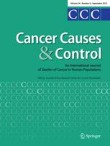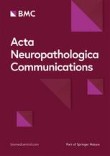|
Αρχειοθήκη ιστολογίου
-
►
2023
(391)
- ► Φεβρουαρίου (200)
- ► Ιανουαρίου (191)
-
►
2022
(2843)
- ► Δεκεμβρίου (161)
- ► Σεπτεμβρίου (219)
- ► Φεβρουαρίου (264)
- ► Ιανουαρίου (280)
-
►
2021
(5625)
- ► Δεκεμβρίου (231)
- ► Σεπτεμβρίου (345)
- ► Φεβρουαρίου (620)
-
▼
2020
(2065)
- ► Δεκεμβρίου (535)
-
▼
Νοεμβρίου
(733)
-
▼
Νοε 19
(33)
- Intracranial hypertension due to spinal cord tumor...
- Validity of the Japanese core outcome measures ind...
- Analytical solitary wave solution of dust ion acou...
- Investigation of the relationship of the number, l...
- Treatment Pattern and Outcomes in Newly Diagnosed ...
- Preparation of melamine–formaldehyde resin-microen...
- Preparation and characterization of PSF-TiO 2 hybr...
- Effects of socioeconomic status on cancer patient ...
- Functional genomic analyses uncover APOE -mediated...
- Right ventricular outflow tract obstruction caused...
- Perfusion in hand arthritis on dynamic contrast-en...
- The Effects of Very Low Energy Diets and Low Energ...
- Preparation of a ferroelectric composite film meta...
- Diagnosis and treatment of intramedullary osteoscl...
- Joint hemorrhage accelerates cartilage degeneratio...
- Abuse and Misuse of Pregabalin and Gabapentin: A S...
- The ground state of the lithium atom in dense plas...
- Validation of novel patient-centred juvenile idiop...
- EndoPil: A Magnetically Actuated Swallowable Capsu...
- Neck Muscle and Head/Neck Kinematic Responses Whil...
- Efficacy of Liraglutide to Prevent Weight Regain A...
- Modeling of Virtual Mechanical Circulatory Hemodyn...
- Urea entrapment in cellulose acetate microparticle...
- Overlapping Molecular Pathways Leading to Autism S...
- BDNF rs6265 Variant Alters Outcomes with Levodopa ...
- Green synthesis of CuFeS 2 nanoparticles using mim...
- Laparoscopic Greater Curvature Plication for the T...
- A Randomized, Controlled Trial Comparing the Impac...
- Antimicrobial Stewardship in the Intensive Care Un...
- Physical Activity, Medical Home, and Health Behavi...
- Seeking international consensus on approaches to p...
- Preoperative accelerated radiotherapy combined wit...
- Solitary extrapleural fibrous tumor with hepatic b...
-
▼
Νοε 19
(33)
- ► Σεπτεμβρίου (222)
- ► Φεβρουαρίου (28)
-
►
2019
(9608)
- ► Δεκεμβρίου (19)
- ► Σεπτεμβρίου (54)
- ► Φεβρουαρίου (3791)
- ► Ιανουαρίου (3737)
-
►
2018
(69720)
- ► Δεκεμβρίου (3507)
- ► Σεπτεμβρίου (3851)
- ► Φεβρουαρίου (8116)
- ► Ιανουαρίου (7758)
-
►
2017
(111579)
- ► Δεκεμβρίου (7718)
- ► Σεπτεμβρίου (7549)
- ► Φεβρουαρίου (10753)
- ► Ιανουαρίου (10529)
-
►
2016
(16402)
- ► Δεκεμβρίου (7478)
- ► Φεβρουαρίου (900)
- ► Ιανουαρίου (1250)
! # Ola via Alexandros G.Sfakianakis on Inoreader
Η λίστα ιστολογίων μου
Πέμπτη 19 Νοεμβρίου 2020
Intracranial hypertension due to spinal cord tumor misdiagnosed as pseudotumor cerebri syndrome: case report
Validity of the Japanese core outcome measures index (COMI)-neck for cervical spine surgery: a prospective cohort study
|
Analytical solitary wave solution of dust ion acoustic waves in nonextensive plasma in the framework of damped forced Korteweg–de Vries–Burgers equation
|
Investigation of the relationship of the number, localization, and displacement of rib fractures with intrathoracic structures and abdominal solid organ complications using computed tomography
|
Treatment Pattern and Outcomes in Newly Diagnosed Multiple Myeloma Patients Who Did Not Receive Autologous Stem Cell Transplantation: A Real-World Observational Study
|
Preparation of melamine–formaldehyde resin-microencapsulated ammonium polyphosphate and its application in flame retardant rigid polyurethane foam composites
|
Preparation and characterization of PSF-TiO 2 hybrid hollow fiber UF membrane by sol–gel method
|
Effects of socioeconomic status on cancer patient survival: counterfactual event-based mediation analysis
|
Functional genomic analyses uncover APOE -mediated regulation of brain and cerebrospinal fluid beta-amyloid levels in Parkinson disease
|
Right ventricular outflow tract obstruction caused by sinus of Valsalva aneurysm
|
Perfusion in hand arthritis on dynamic contrast-enhanced computed tomography: a randomized prospective study using MRI as a standard of reference
|
Αρχειοθήκη ιστολογίου
-
►
2023
(391)
- ► Φεβρουαρίου (200)
- ► Ιανουαρίου (191)
-
►
2022
(2843)
- ► Δεκεμβρίου (161)
- ► Σεπτεμβρίου (219)
- ► Φεβρουαρίου (264)
- ► Ιανουαρίου (280)
-
►
2021
(5625)
- ► Δεκεμβρίου (231)
- ► Σεπτεμβρίου (345)
- ► Φεβρουαρίου (620)
-
▼
2020
(2065)
- ► Δεκεμβρίου (535)
-
▼
Νοεμβρίου
(733)
-
▼
Νοε 19
(33)
- Intracranial hypertension due to spinal cord tumor...
- Validity of the Japanese core outcome measures ind...
- Analytical solitary wave solution of dust ion acou...
- Investigation of the relationship of the number, l...
- Treatment Pattern and Outcomes in Newly Diagnosed ...
- Preparation of melamine–formaldehyde resin-microen...
- Preparation and characterization of PSF-TiO 2 hybr...
- Effects of socioeconomic status on cancer patient ...
- Functional genomic analyses uncover APOE -mediated...
- Right ventricular outflow tract obstruction caused...
- Perfusion in hand arthritis on dynamic contrast-en...
- The Effects of Very Low Energy Diets and Low Energ...
- Preparation of a ferroelectric composite film meta...
- Diagnosis and treatment of intramedullary osteoscl...
- Joint hemorrhage accelerates cartilage degeneratio...
- Abuse and Misuse of Pregabalin and Gabapentin: A S...
- The ground state of the lithium atom in dense plas...
- Validation of novel patient-centred juvenile idiop...
- EndoPil: A Magnetically Actuated Swallowable Capsu...
- Neck Muscle and Head/Neck Kinematic Responses Whil...
- Efficacy of Liraglutide to Prevent Weight Regain A...
- Modeling of Virtual Mechanical Circulatory Hemodyn...
- Urea entrapment in cellulose acetate microparticle...
- Overlapping Molecular Pathways Leading to Autism S...
- BDNF rs6265 Variant Alters Outcomes with Levodopa ...
- Green synthesis of CuFeS 2 nanoparticles using mim...
- Laparoscopic Greater Curvature Plication for the T...
- A Randomized, Controlled Trial Comparing the Impac...
- Antimicrobial Stewardship in the Intensive Care Un...
- Physical Activity, Medical Home, and Health Behavi...
- Seeking international consensus on approaches to p...
- Preoperative accelerated radiotherapy combined wit...
- Solitary extrapleural fibrous tumor with hepatic b...
-
▼
Νοε 19
(33)
- ► Σεπτεμβρίου (222)
- ► Φεβρουαρίου (28)
-
►
2019
(9608)
- ► Δεκεμβρίου (19)
- ► Σεπτεμβρίου (54)
- ► Φεβρουαρίου (3791)
- ► Ιανουαρίου (3737)
-
►
2018
(69720)
- ► Δεκεμβρίου (3507)
- ► Σεπτεμβρίου (3851)
- ► Φεβρουαρίου (8116)
- ► Ιανουαρίου (7758)
-
►
2017
(111579)
- ► Δεκεμβρίου (7718)
- ► Σεπτεμβρίου (7549)
- ► Φεβρουαρίου (10753)
- ► Ιανουαρίου (10529)
-
►
2016
(16402)
- ► Δεκεμβρίου (7478)
- ► Φεβρουαρίου (900)
- ► Ιανουαρίου (1250)








